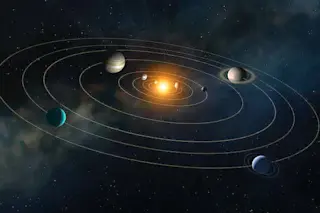Spring, summer, fall and winter – the seasons on Earth change every few months, around the same time every year. It’s easy to take this cycle for granted here on Earth, but not every planet has a regular change in seasons. So why does Earth have regular seasons when other planets don’t?
I’m an astrophysicist who studies the movement of planets and the causes of seasons. Throughout my research, I’ve found that Earth’s regular pattern of seasons is unique. The rotational axis that Earth spins on, along the North and South poles, isn’t quite aligned with the vertical axis perpendicular to Earth’s orbit around the Sun.
That slight tilt has big implications for everything from seasons to glacier cycles. The magnitude of that tilt can even determine whether a planet is habitable to life.
When a planet has perfect alignment between the axis it orbits on and the rotational axis, ...














